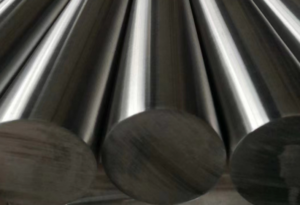In the realm of metallurgy and materials science, high-carbon steel and high-speed steel occupy distinct positions, each with unique properties and applications. Understanding the difference between high-carbon steel and high-speed steel is crucial for anyone working in the manufacturing, engineering, or any other field that requires precision and durability in metal components. This article aims to provide a detailed, authoritative comparison of the two types of steel, focusing on their composition, mechanical properties, heat treatment, and usage.

What is the difference between high-carbon steel and high-speed steel?
Difference between High-carbon Steel and High-speed Steel – Composition
Firstly, let’s delve into the composition of high-carbon steel. As the name suggests, high-carbon steel is primarily characterized by its high carbon content. Typically, the carbon content ranges from 0.60% to 1.70%. This high carbon level gives the steel excellent strength and hardness, making it suitable for applications that require significant wear resistance and durability. High-carbon steel is often referred to as tool steel due to its common use in the manufacturing of tools such as hammers, chisels, and cutting edges. Additionally, alloys of high-carbon steel may also contain other elements like manganese, silicon, and vanadium, which are added to further enhance mechanical properties.
On the other hand, high-speed steel (HSS) differs significantly in its composition. HSS is an alloy steel containing high levels of tungsten, molybdenum, cobalt, and other elements. This unique composition gives HSS its renowned characteristics of high hardness, wear resistance, and heat resistance. The addition of these elements creates a complex carbide structure within the steel, responsible for its excellent cutting properties. HSS was originally developed in the late 19th century and has since become a staple in the manufacturing of cutting tools, such as drills, milling cutters, and lathe tools.
Difference between High-carbon Steel and High-speed Steel – Composition
Moving on to mechanical properties, the difference between high-carbon steel and high-speed steel becomes even more apparent. High-carbon steel, while extremely hard and strong, can be brittle under certain conditions, particularly when not properly heat-treated. Its hardness and strength make it suitable for applications that require resistance to abrasion and wear. However, its relatively low toughness and ductility limit its use in applications that involve impact or bending forces.
Contrastingly, high-speed steel offers a unique balance of hardness, wear resistance, and toughness. Its high hardness ensures exceptional cutting performance, while its toughness allows it to withstand the rigors of high-speed cutting operations without breaking or chipping. This combination of properties makes HSS the preferred choice for manufacturing high-performance cutting tools.
Difference between High-carbon Steel and High-speed Steel – Heat Treatment
Heat treatment plays a crucial role in the performance of both high-carbon steel and high-speed steel. High-carbon steel undergoes processes such as quenching and tempering to achieve desired hardness and toughness levels. Quenching involves rapidly cooling the steel to lock in its hard martensite structure, while tempering relieves some of the internal stresses and improves toughness.
High-speed steel, on the other hand, requires a more complex heat treatment process, including annealing, quenching, and multiple tempering steps. This intricate heat treatment cycle is necessary to achieve the desired carbide distribution and optimize the steel’s cutting performance. The result is a tool material that can retain its sharpness and wear resistance even under extreme operating conditions.
Difference between High-carbon Steel and High-speed Steel – Usage
In terms of usage, high-carbon steel finds widespread application in tools and wear-resistant components. Its ability to withstand abrasion and impact makes it suitable for hammer heads, chisels, and other tools that require significant durability. High-speed steel, on the other hand, is primarily used in the manufacturing of cutting tools and machine parts that require high-speed cutting operations. Its exceptional cutting performance and durability make it the ideal choice for precision machining and manufacturing processes.
Conclusion
In conclusion, the difference between high-carbon steel and high-speed steel lies in their composition, mechanical properties, heat treatment, and usage. High-carbon steel is prized for its strength and wear resistance, making it suitable for tools and wear-resistant components. High-speed steel, with its unique combination of hardness, wear resistance, and toughness, excels in high-speed cutting applications, such as precision machining.
Thank you for reading our article and we hope it can help you to have a better understanding of the differences between high-carbon steel and high-speed steel. If you are looking for high-speed steel suppliers online now, we would advise you to visit Sino Special Metal for more information.
As a leading supplier of high-speed metals from Shanghai China, Sino Special Metal offers customers high-quality high-speed metal products at a very competitive price.




